Surrounded by the hills of central Honshu, Kyoto is one of Japan's largest cities and the educational hub of western Japan with several universities and higher educational establishments. Although one of Japan's great tourist destinations, it has managed to preserve much of the atmosphere of the past, having been the only major Japanese city to escape the devastation of WWII. Famous as the residence of the emperor and Japan's principal cultural center for almost 1,100 years, Kyoto today boasts numerous fine examples of sculptures, paintings, and other art forms in its many museums and galleries. The city is also home to centuries-old architecture, much of it influenced by Buddhism and found in well-preserved temples. Kyoto continues to play an important role in Japanese religion, with 30 of the city's temples still serving as centers of various Buddhist sects, along with some 200 Shinto shrines within the city limits.
1 Nijo Castle
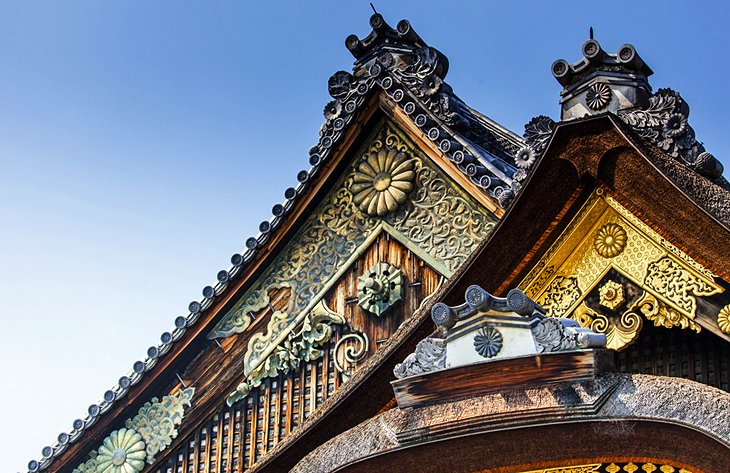
Nijo Castle, complete with walls, towers, and a moat, was built in 1603 and later served as the seat of government. The complex has several buildings containing many significant works of art and is famous as the location chosen by the emperor to issue the rescript abolishing the country's once powerful Shogunate. Highlights include the castle's East Gate (Higashi Otemon, its main entrance); the Inner Gate, or Karamon, notable for its fine carvings and decorated metalwork; and beyond this, the elaborate Mikuruma-yose. The site's most important building is Ninomaru Palaceconsisting of five separate buildings linked by corridors, and with exquisite interiors decorated with paintings by Kano Tanyu and his pupils. The principal apartment is the Hall of the Imperial Emissary (Jodan-no-ma), matched in splendor by the adjoining rooms, Ni-no-ma and Tozamurai-no-ma with their paintings of tigers. Also of interest is the adjacent building with its large Audience Hall surrounded by a gallery and with sliding doors with large paintings of larches on a gold background. The fourth building, the Kuro-Shoin, has animal paintings by Kano Naonobu, while in the Shogun's private apartments are paintings of mountain landscapes.
Address: 541 Nijojocho, Nakagyo Ward, Kyoto, Kyoto Prefecture 604-8301
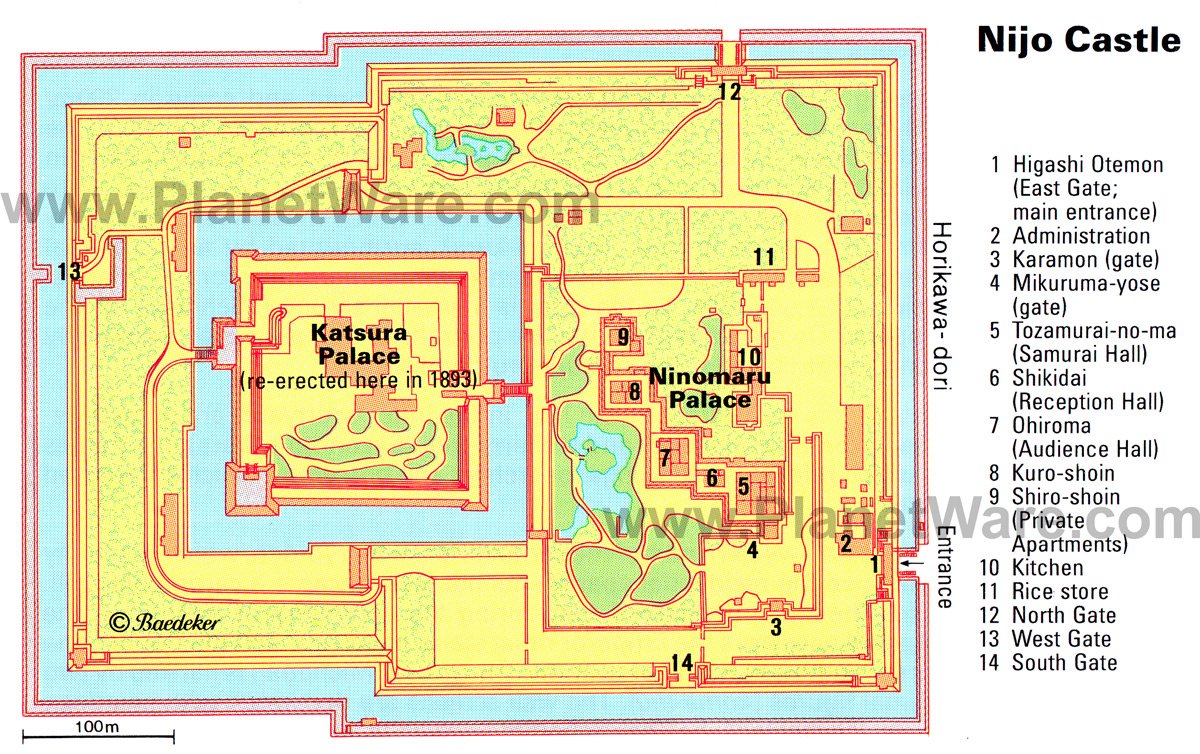 Nijo Castle Map
Nijo Castle Map
2 Fushimi-Inari Taisha Shrine
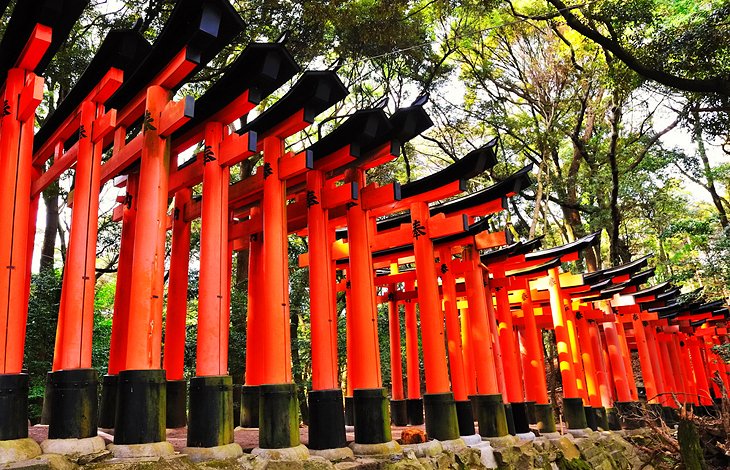
One of Japan's most famous shrines, the Fushimi-Inari Shrine is a must-visit when in Kyoto. Founded in AD 711 and dedicated to the goddess of rice-growing, Ukanomitama-no-mikoto, the shrine is still frequented by merchants and tradesmen who pray for prosperity. The main building dates from 1499 and features a spectacular four-kilometer-long avenue of bright orange "torii," or arches, each dedicated by a business (it takes some two-hours to travel past the 32,000 arches lining the route). Also notable are its many sculptures of foxes, reputed to be messengers of the gods.Hot Tip: Fortify yourself with the purchase of traditional Japanese fortune cookies from the shops and stands at the shrine's entrance.
3 Kinkaku-ji: The Golden Pavilion
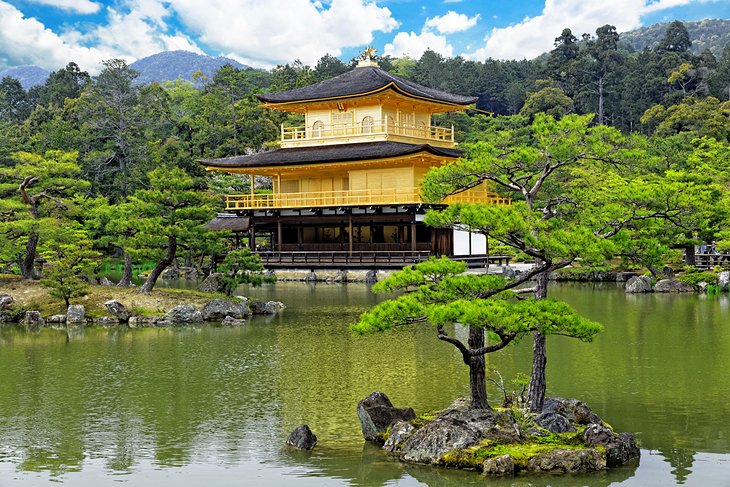
Originally built in the 14th century as a retirement villa for Shogun Ashikaga Yoshimitsu and now a Zen Buddhist temple, the magnificent Golden Pavilion (Kinkaku-ji) is one of Kyoto's most picturesque attractions. Taking its name from the gold leaf adorning the top two of its three floors - a design element believed to alleviate any negativity associated with death - the structure has been rebuilt in its original form a number of times, this most recent incarnation dating from the late 1950s. Built over a large pond, the site is also famous for its beautiful grounds, as well as its old stone pagoda and the Sekkatei Tea House with its traditionally served beverages.
Address: 1 Kinkakujicho, Kita Ward, Kyoto, Kyoto Prefecture 603-836
4 Kiyomizu-dera Temple
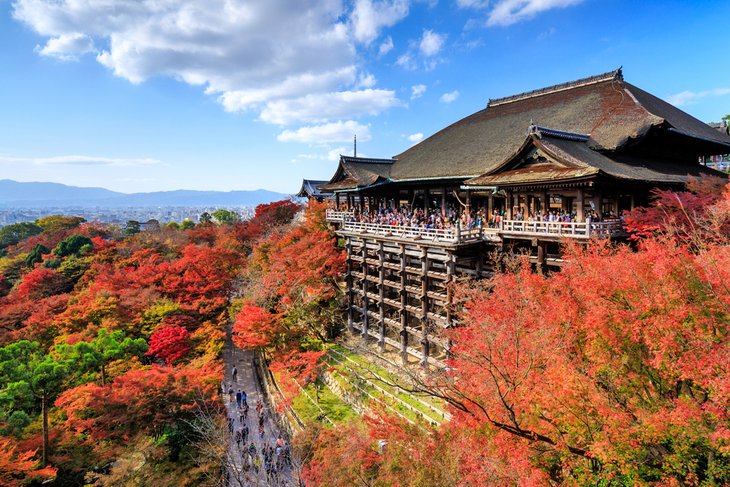
In the east part of Kyoto, the Kiyomizu Temple, an important UNESCO World Heritage Site, lies in a picturesque location on Otowa Mountain overlooking the city. Visitors can enjoy a delightful stroll to the temple along quaint Tea-pot Lane with its small shops and craft stores. Founded in AD 790 and dedicated to the 11-headed Kannon, the Buddhist Goddess of Mercy whose statue can be seen here, the existing buildings were erected after 1633 in the period of the third Tokugawa Shogun, Iemitsu, and stand mainly on a rocky outcrop high above the Otowa Waterfall. Highlights include the large terrace of the Main Hall, built on 30-meter-tall pillars with five rows of cross-beams and used as a stage for temple dances and ceremonies. The terrace affords spectacular views over the city and the surrounding wooded hills, especially when the leaves change color in fall.
Address: 294 Kiyomizu 1-chome, Higashiyama Ward, Kyoto, Kyoto Prefecture 605-0862
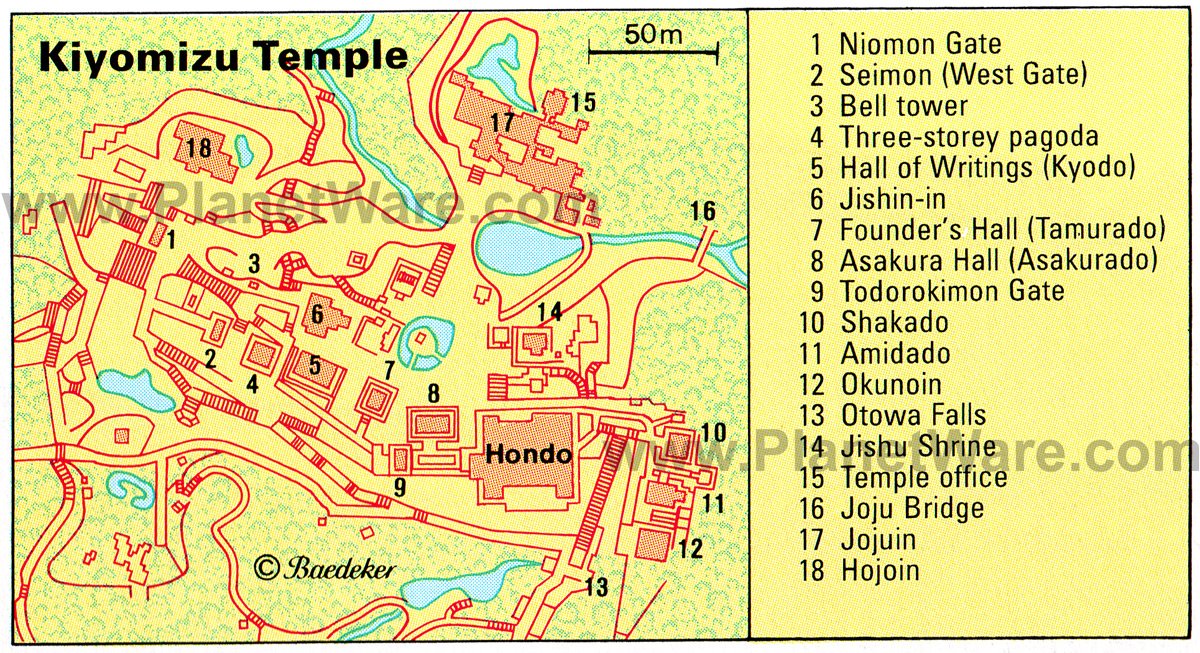 Kiyomizu Temple Map
Kiyomizu Temple Map
5 Sanjūsangen-dō Temple
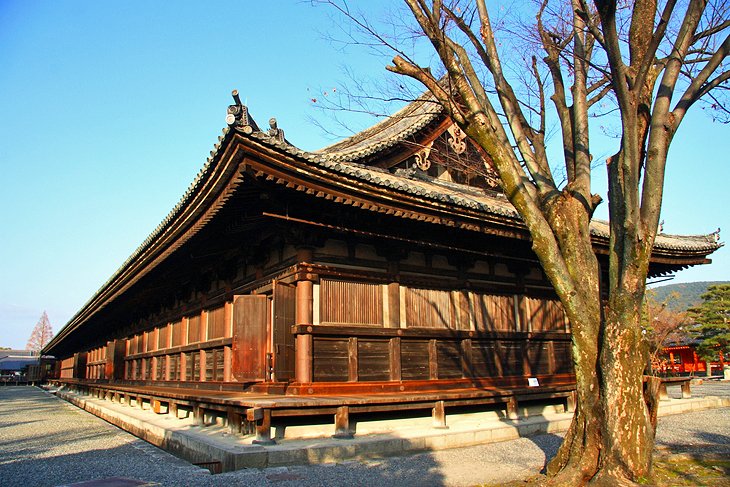
Sanjūsangen-dō (Rengyoin Temple), or the Temple of the 33 Niches, takes its name from its rather unusual structure, with its façade divided into 33 (sanjusan) niches (gen) to reflect the belief that Kannon, the Goddess of Mercy, could take on 33 different personifications. Originally built in 1164, the present elongated building was constructed in 1266 after a fire destroyed its predecessor, with evidence of its former importance as a place of training in archery still seen in the many holes in its ancient pillars and timbers made by arrowheads. The most important of its many works of art is the Kannon with a Thousand Hands, a nearly three-and-a-half-meter-tall statue, which dates from the 13th century and is notable for the 500 standing figures of Kannon lined up on either side of it. Also of note are the additional sculptures of the 28 "celestial auxiliaries," spirits considered subordinate to Kannon, located behind it.
Address: 657 Higashiyama Ward, Kyoto, Kyoto Prefecture 605-0941
6 Kyoto Imperial Palace
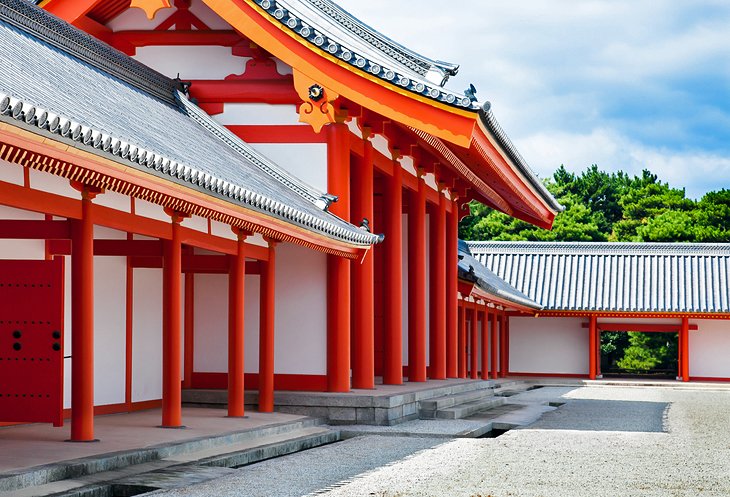
The original Kyoto Imperial Palace (Kyoto-gosho), built in AD 794 and replaced several times after being destroyed by fire, remains one of the city's most visited historic sites. Although the present building was constructed in 1855, it still impresses. Occupying a large (once-walled) enclosure near the heart of the city, the palace includes highlights such as its finely decorated gates, along with a chance to see a number of the palace's most important rooms and buildings, including the Hall for State Ceremonies (Shishinden), the Emperor's Residence (Seiryo-den), the Courtroom (Ko-gosho), and the Imperial Library. While the lovely grounds of this Kyoto landmark are open to the public, the palace itself can only be visited as part of a guided tour operated by the Imperial Household Agency (check their website for details and application forms).
Address: 3 Kyoto-Gyoen, Kamigyo Ward, Kyoto, Kyoto Prefecture 602-0881
7 Nishi Honganji Temple
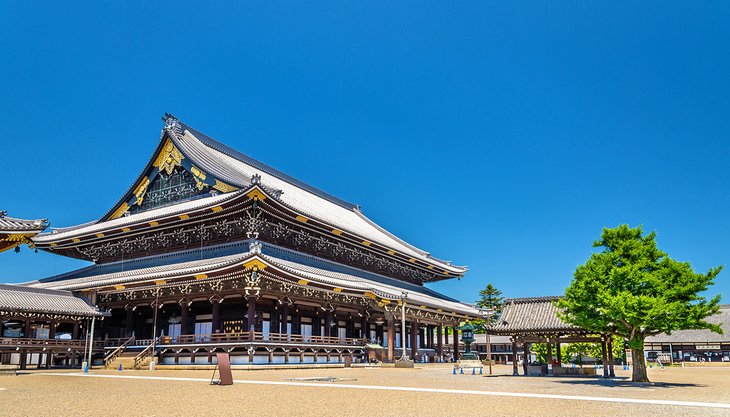
The chief temple of the original Jodo-shinshu sect, Nishi Honganji Temple is an outstanding example of Buddhist architecture. Highlights include the Hondo, or Main Hall, rebuilt in 1760 with a number of fine rooms decorated with paintings on gold backgrounds and numerous important statues, some dating from the 6th century. Also of interest is the Founder's Hall (Daishi-do) with its much-revered statue of Shinran, carved in 1244 and later covered with a coat of lacquer mingled with his ashes. Another notable building is the Daishoin, or Treasury, with various rooms named after the exquisite wall and ceiling paintings with which they're decorated, including the Sparrow Room (Suzume-no-ma), the Room of the Wild Geese (Gan-no-ma), and the Chrysanthemum Room (Kiku-no-ma) with its fine 17th-century paintings of flowers in gold and white by Kaiho Yusetsu. Also of interest is the Higashi-Honganji Temple of the Jodo-shinshu sect, founded in 1602 and home to a number of examples of fine artwork. Hot Tip: Only a few parts of these temples are open to the public, so be sure to make arrangements in advance of your visit to include other areas not normally accessible.
8 The Kyoto National Museum and Municipal Museum of Art
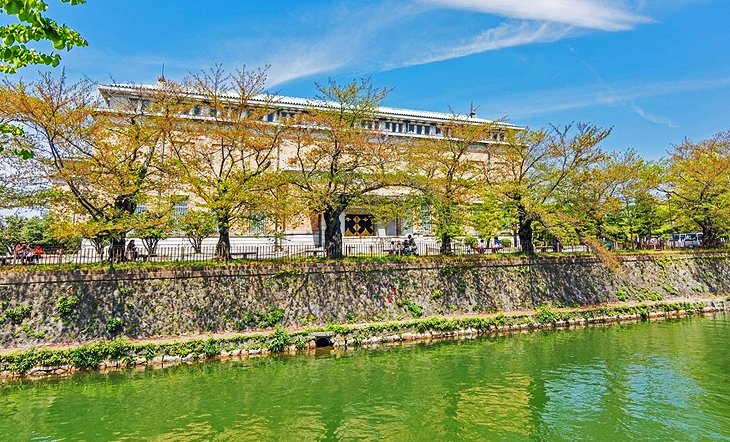
In addition to its many fine old temples with their important artworks, Kyoto also boasts a number of impressive collections in its many world-class museums and galleries. Perhaps the best known is the National Museum, an art gallery established in 1897 that is widely considered the most important such museum in Japan. Focusing predominantly on pre-modern Asian art, particularly examples from Japan, the museum was completely renovated in 2014 and boasts numerous examples of historic art and applied arts spread across a number of buildings (be prepared for plenty of walking). Also worth seeing is Kyoto Municipal Museum of Art, opened in 1928 and featuring important works by Takeuchi Seihō, one of Japans' leading artists of the 20th century.
Address: 527 Chayacho, Kyoto, Kyoto Prefecture 605-0931
9 Gion's Geishas and Temples
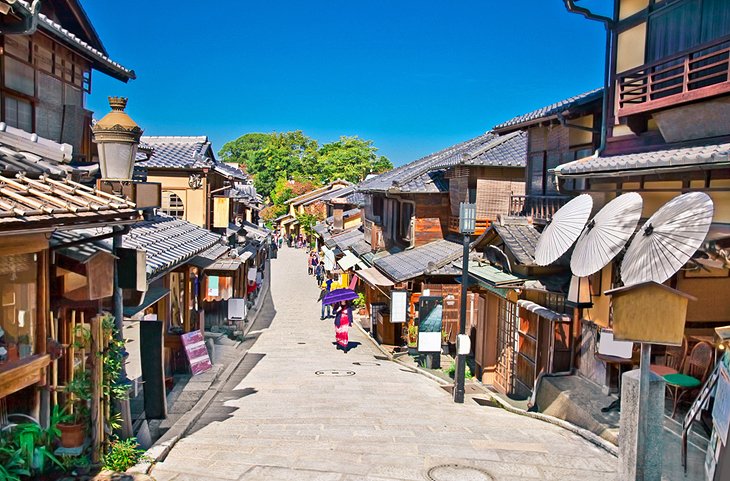
Famous as an entertainment and geisha district, Gion is an area of Kyoto that is well suited to exploring on foot. On the eastern bank of the Kamogawa River, Gion is an eclectic mix of modern architecture and historical beauty that provides a unique taste of numerous Japanese traditions, from the elaborately dressed geishas to well-preserved 17th-century restaurants and teahouses offering a taste of old Japan. Centered on an area encompassing Hanami-Koji Street, Shijo-dori Street, and the waterside promenades of Shirakawa Minami-dori Street, Gion is also famous for its many fine temples, in particular the 15th-century Silver Pavilion (Ginkakuji) and the Chion-in Temple, one of Japan's most famous temples, notable for its 24-meter-high, two-story tower (Sammon-san), which houses the country's largest bell weighing 71 tons, cast in 1633, and rung only during festivals in mid-April.
Address: Nishi Ten-o-cho, Okazaki, Sakyo-ku, Kyoto, Kansai 606-8341
10 Katsura Imperial Villa
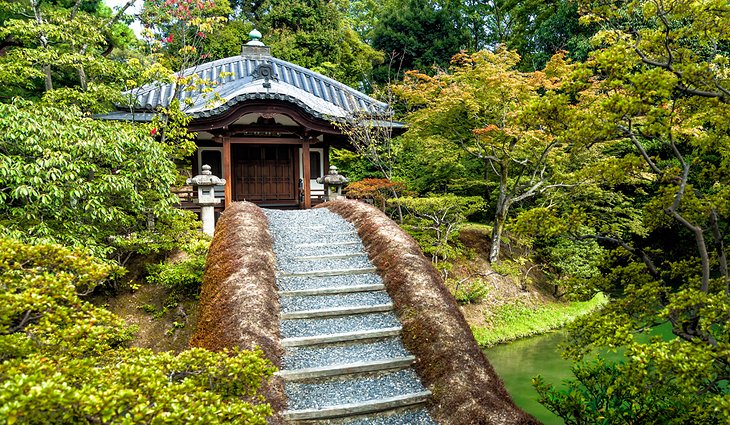
Originally constructed in 1624 for Prince Hachijo Toshihito, brother of Emperor Goyozei, the Katsura Imperial Villa is home to one of Japan's most famous historic gardens. Designed by Kobori Enshu with assistance by the prince, this beautiful garden is laid out in such a way that the visitor always sees things from the front; smaller gardens are grouped around a large pool with the summits of Mounts Arashiyama and Kameyama in the background. Highlights include the Miyuki-mon Gates and the many garden paths, some made from river pebbles and others of rectangular cobbles, edged by mosses and bushes, and leading through further gates into the inner garden with a group of buildings known as the Goten at its center. A particular highlight here is the veranda of Furu-shoin, specially designed to permit observation of the moon, and the three rooms of the Naka-shoin with its many fine paintings by Japan's leading artists.
Address: Katsuramisono, Kyoto, Kyoto Prefecture 615-8014
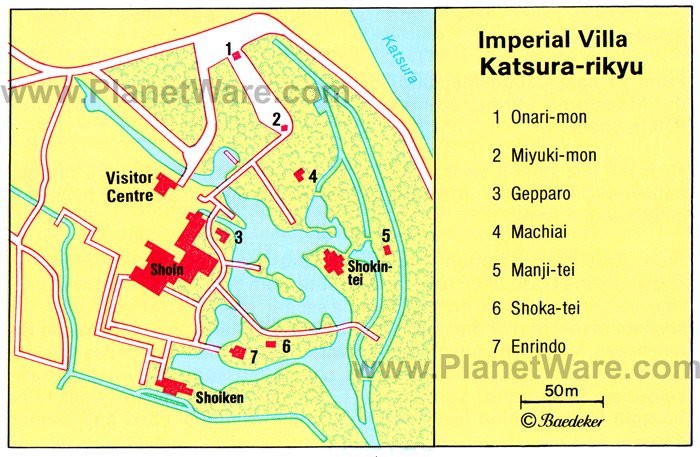 Imperial Villa - Katsura Rikyu Map
Imperial Villa - Katsura Rikyu Map
11 Daitoku-ji Temple
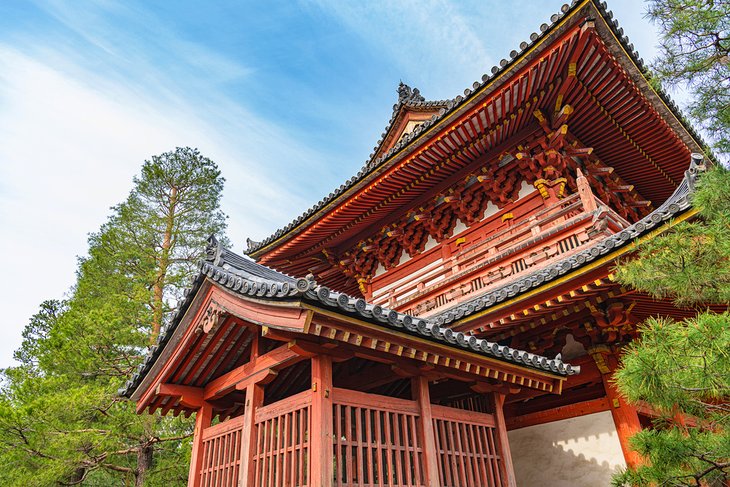
The Daitoku-ji Temple - the Zen Temple of Great Virtue - is one of the principal temples of the Rinzai sect and was founded in 1324, with the present structures dating from the 16th and 17th centuries. Of the 22 buildings on-site, seven are open to the public, including the Kara-mon, a Chinese-style gate with magnificent carvings, and the two-story main gate, Sammon, built in 1589 and notable for its many fine ceiling paintings and statues. The Main Hall, the Butsuden (or Daiyu-den), was built in 1664 and contains a statue of Shakyamuni with his disciples Anna and Kayo and a figure of Daito-kokushi, first Abbot of the temple. Beyond the Main Hall is the Lecture Hall, or Hatto, based on Chinese models, and the Hojo, or Abbot's Lodging, with its paintings, wooden tablet, and adjoining garden. Other highlights include the old Abbot's Lodging (Shinju-an) with its statues and tombs dating from the 14th century, and a lovely Zen garden.
Address: 3 Murasakino Daitokujicho, Kyoto, Kyoto Prefecture 603-8231
12 The Byōdō-in Temple
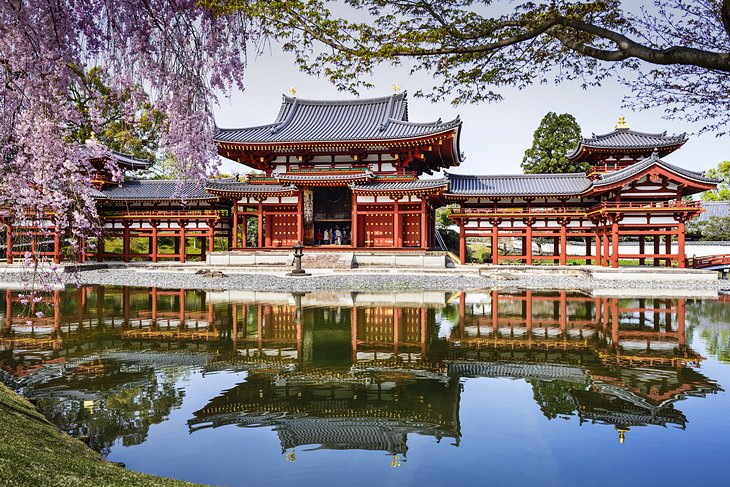
The Byōdō-in Temple, established in AD 988, boasts many unique buildings, shrines, and artworks worthy of a visit. Highlights include the Phoenix Hall (Hoo-do), with its bronze phoenixes on its two gables and rich interior décor; 11th-century paintings, including an imposing gilded figure of Amida; and an altar and ceiling inlaid with bronze and mother-of-pearl. Adjoining is the Kannon-do, a hall directly above the river and known as the Tsuridono, or Fishing Hall. Be sure to spend time visiting the temple gardens with their many fine ponds, as well as the Byōdō-in Museum with its treasures relating to the temple site, including its 52 wooden Buddha statues, carved phoenixes, and the original temple bell. Also worth a visit is the Zen Tenryu-ji Temple, from which you can access the wonderful Arashiyama Bamboo Grove, an area full of tall bamboo that is simply breathtaking.
Address: Renge-116 Uji, Kyoto Prefecture 611-0021
No comments:
Post a Comment